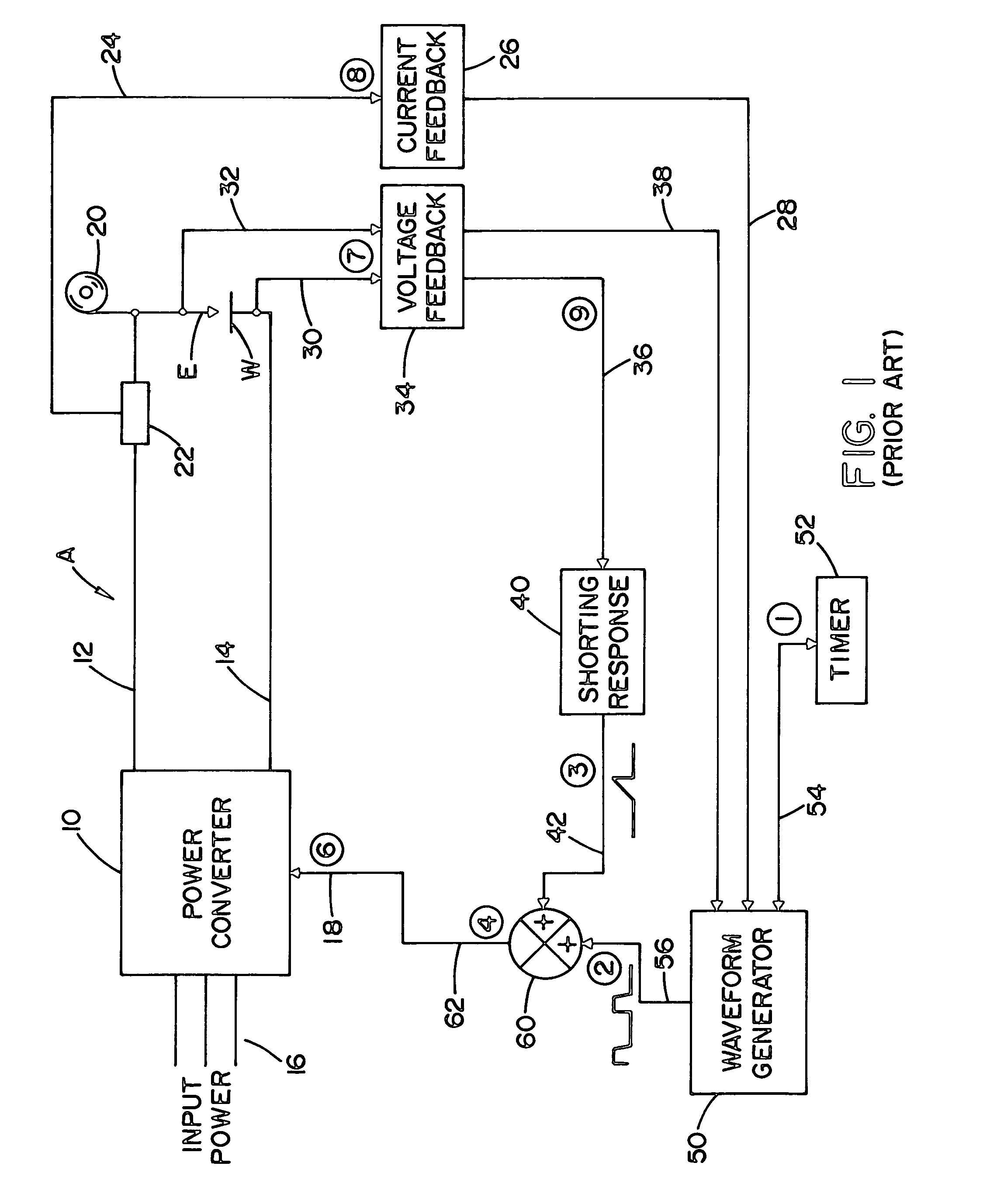Pulse welder and method of using same
a pulse welder and pulse welding technology, applied in the direction of instruments, manufacturing tools, apparatus for dispensing discrete objects, etc., can solve the problems of reducing the traveling rate of the welding operation, affecting the welding process, so as to reduce the arc force, promote shorting events, and keep the droplet size small
- Summary
- Abstract
- Description
- Claims
- Application Information
AI Technical Summary
Benefits of technology
Problems solved by technology
Method used
Image
Examples
Embodiment Construction
[0052]Referring now to the drawings, wherein the showings are for the purpose of illustrating a preferred embodiment of the invention only and not for the purpose of limiting same, FIGS. 1-3 illustrate a prior art electric arc welder A for performing a pulse welding process, as shown in FIG. 2. The prior art is illustrated since the components used in practicing the invention are essentially the same as standard components in electric arc welder. Although other welder architecture could be used, the preferred architecture is a welder controlled by waveform technology as pioneered by The Lincoln Electric Company of Cleveland, Ohio. Two of many patents relating to waveform technology is described in Blankenship U.S. Pat. No. 5,278,390 and Fulmer U.S. Pat. No. 6,498,321, incorporated by reference herein as background information. In this type of welder, a waveform generator produces the profile for the waveforms used in a pulse welding process. The power source creates the pulses in ac...
PUM
| Property | Measurement | Unit |
|---|---|---|
| voltage | aaaaa | aaaaa |
| arc length | aaaaa | aaaaa |
| frequency | aaaaa | aaaaa |
Abstract
Description
Claims
Application Information
 Login to View More
Login to View More - R&D
- Intellectual Property
- Life Sciences
- Materials
- Tech Scout
- Unparalleled Data Quality
- Higher Quality Content
- 60% Fewer Hallucinations
Browse by: Latest US Patents, China's latest patents, Technical Efficacy Thesaurus, Application Domain, Technology Topic, Popular Technical Reports.
© 2025 PatSnap. All rights reserved.Legal|Privacy policy|Modern Slavery Act Transparency Statement|Sitemap|About US| Contact US: help@patsnap.com



